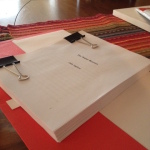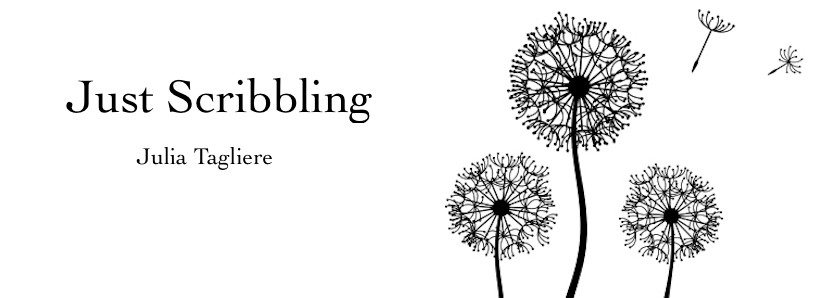Last time, I posted an update about where I was with The Water Bearers, my second novel. At that time, I was taking a much-needed break from the now-completed first draft before starting the editing process. As I told one writer friend earlier this week, it’s so that I can return to it, when I’m ready to edit, with fresh eyes and a ruthless hand.
I think you can tell from the photo that now, after my two-month break, I’m ready to go (or to kill; not sure which, sometimes).
I had originally intended to start the process around when the King (Stephen) advised to do so, say, six weeks or so after completion. However, today is the last day of my writing class, and it also gives me roughly two weeks until the end of the year, so it feels like this is the perfect time to get this baby all wrapped up.
How exactly does my editing process work?
First, I’ll do a straight read-through from a hard copy, making no edits whatsoever. I’ll just to try to approach it as a reader would, something that’s harder for a writer than you might imagine. I’ll jot some notes in the margin, maybe highlight a couple of things, and, because I work bass-ackwards compared to some writers, I’ll create a working outline from what I’ve done to make sure that all of the elements are plotted out and make sense. Some writers do that last part first, but that’s not how I roll. The one thing that’s true of all writers is that your process has to work for you, not for anyone else.
 Once I’ve finished the read-through (which I’m doing on a print copy), then I’ll sit down and play a little Search-and-Destroy–uh, I mean, Search and Refine– the more “mechanical” part of the process. I use the Search feature on my computer to ferret out repetitive words, annoying phrases, etc. It’s a dandy little technique I first heard about from my editor on Widow Woman and developed further using the book Write In Style: Using Your Word Processor and Other Techniques to Improve Your Writing by Bobbie Christmas. (Haven’t read this book yet? Get it. It’s an unbelievably helpful way to eliminate wordiness, annoying tics, etc.)
Once I’ve finished the read-through (which I’m doing on a print copy), then I’ll sit down and play a little Search-and-Destroy–uh, I mean, Search and Refine– the more “mechanical” part of the process. I use the Search feature on my computer to ferret out repetitive words, annoying phrases, etc. It’s a dandy little technique I first heard about from my editor on Widow Woman and developed further using the book Write In Style: Using Your Word Processor and Other Techniques to Improve Your Writing by Bobbie Christmas. (Haven’t read this book yet? Get it. It’s an unbelievably helpful way to eliminate wordiness, annoying tics, etc.)
Once I get past those phases, I’ll do one to two more substantive passes and really zero in on fleshing out characters, tightening up the plot, focusing on tension and engagement–all those things that I hope will keep readers turning the page.
Once everything else is done, I’ll do a final spelling and grammar check via my computer. (Is that really necessary, you might ask? Believe me, if you’re asking, it’s necessary. Does a computerized spell check catch everything? No. Don’t computer spell checks sometimes misinterpret the writer’s intent and suggest the wrong word? Of course–they’re computers, not people; you don’t just blindly accept every change they recommend. But every once in a while, the computer will catch something your eye has missed, even after all those passes, so yes, you’ve got the tool, use it. )
Then, and only then, I will finally consider it ready for beta readers (the next phase in the process). I will be looking for volunteers, so be ready. I promise, there are far fewer sharp objects involved in that phase.

